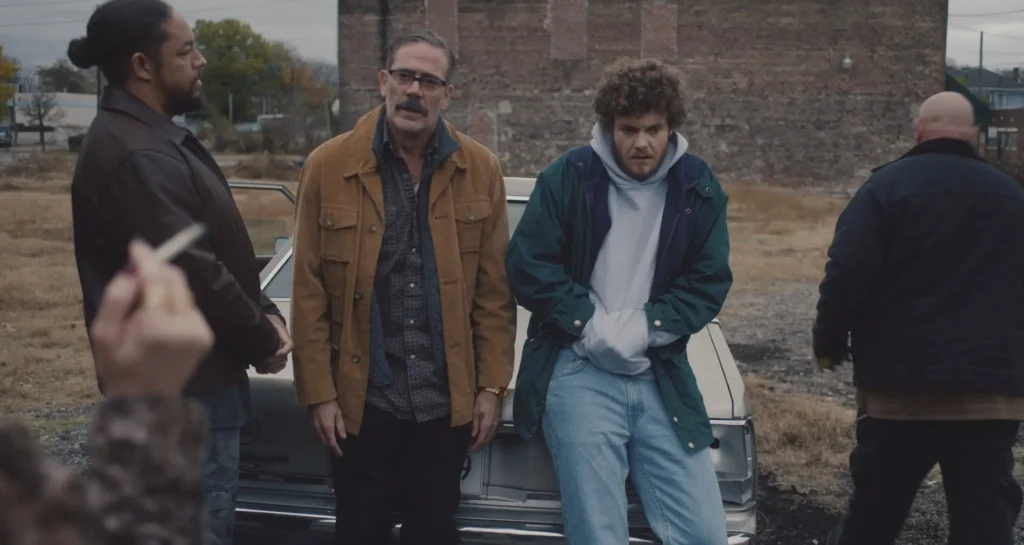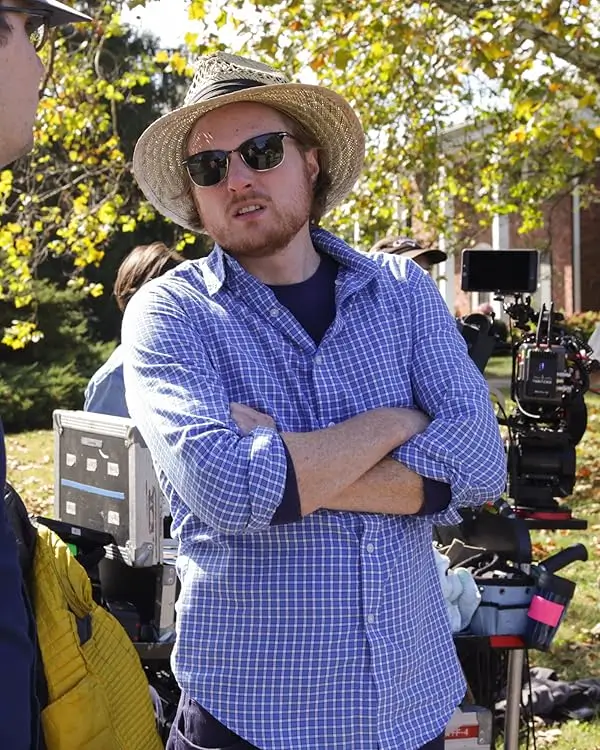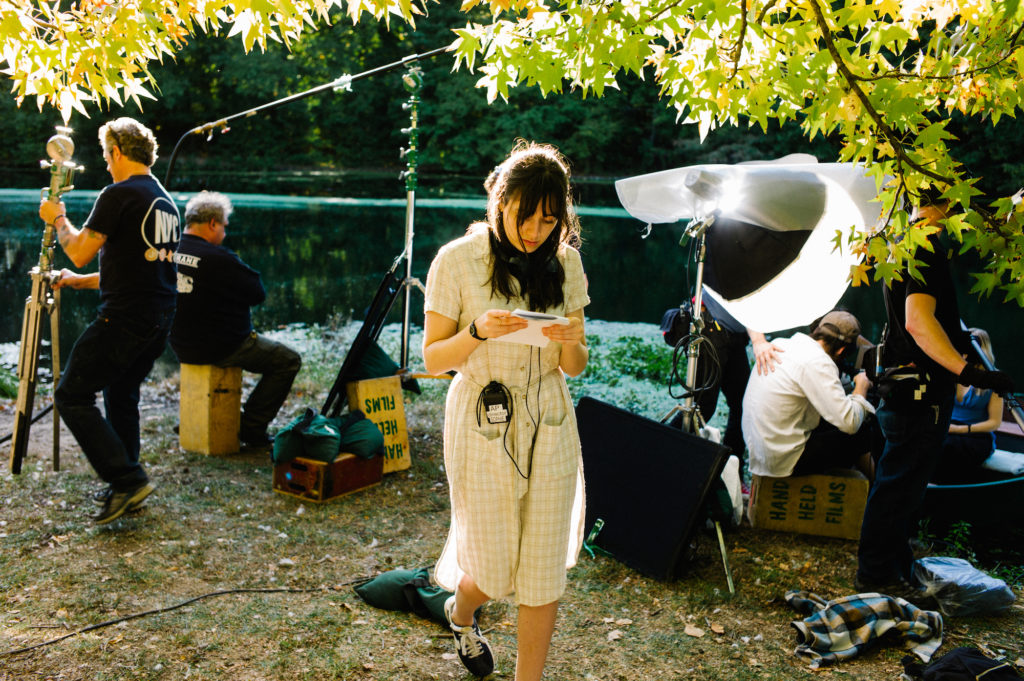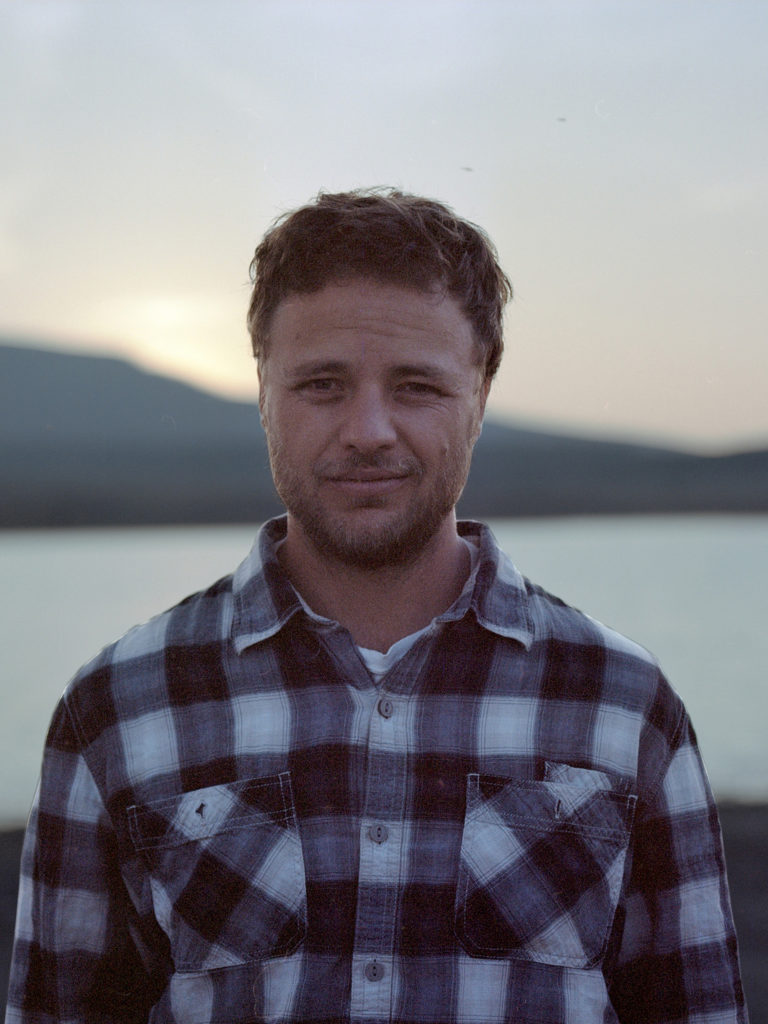Like many filmmakers, DUNCAN SKILES met a group of like-minded collaborators while attending film school – in his case, NYU. But not every collective of film school friends has seen the success that Skiles and his fellow Waverly Films co-founders have. In addition to Skiles (who directed The Clovehitch Killer), the group included Jon Watts (director of Cop Car and the Tom Holland Spider-Man trilogy), Jake Schreier (director of Robot & Frank and Thunderbolts), Jeff Kaplan (co-writer of The Fantastic Four: First Steps), and Christopher Ford (co-writer of Robot & Frank, Cop Car, Spider-Man: Homecoming, and writer of The Clovehitch Killer). That 2018 coming-of-age thriller earned praise from Stephen King, who called it “unbearably suspenseful,” and a place on Paste Magazine’s list of 50 Best Serial Killer Movies of All Time. Prior to his feature work, Skiles was known for directing music videos, stand-up specials, and commercials.
The success of The Clovehitch Killer led Duncan to his newest feature, NEIGHBORHOOD WATCH. Written by Sean Farley, Neighborhood Watch centers on Simon (Jack Quaid), a mentally ill young man who witnesses what he thinks is an abduction and recruits his misanthropic neighbor Ed (Jeffrey Dean Morgan) into helping him solve the mystery of a missing woman (who might only be missing in Simon’s head). Malin Akerman co-stars in the film, which will be released by RLJE Films in theaters on April 25.
We spoke with the film’s director and executive producer, Duncan Skiles, about his career, the ambitious shoot, and what’s next for him.
____
COLIN McCORMACK: I’ve talked to filmmakers before who were part of a collective with their film school friends. So I’m curious what you took from those early days of finding your filmmaking tribe and what you’ve brought to your career as a professional director?
DUNCAN SKILES: It was an environment of healthy competition, of us trying to make each other laugh and show off a little bit in terms of technique. We had a grind mentality getting out of school, where we thought it would be a good idea to make as much stuff as possible as quickly as possible so that we could practice. That’s where the concept of doing a little short every week came up. We started doing that, and then started posting on YouTube. This was in the earlier days of YouTube, when it had a front page. Some of our clips reached the front page, and we got more exposure that way.
There was also a flexibility mindset in terms of roles. I would do sound for my buddy on his short and craft services on another guy’s film. I got a taste for a lot of the different roles on a film set through that experience. Ultimately, I feel like I graduated from that scene. I went into comedy because of it, then it took me a while to realize I wasn’t interested in just straight comedy. As much as I love to watch it, I think it’s super hard to do, and it’s not something that I can do very well. I like suspense and tension, and I like all of that with a dry sense of humor. So I had to go through that process on the journey of finding my voice and figuring out what I really responded to.
CM: Coming from the days of YouTube, did you learn about audience engagement in a way that helps on the feature film side of things? Or is it just a different world?
DS: I did learn an important lesson in terms of not trying to be too eager to please. When we started chasing trends with our YouTube channel, that felt off. And people responded negatively, saying that we weren’t doing our thing. So it was good to learn that lesson. When creating anything, there’s got to be a balance between what you’re interested in and what you think the audience is going to respond to. You need to be interested in it yourself to get through the process, and you’ve got to enjoy the process. At the same time, I do want the film to be a good experience for the audience. So I’m thinking about how people are going to perceive things because filmmaking is communication. From what the characters are wearing to how they walk to where you put the camera, you’re saying so much with every decision. I like feeling that I’m in good hands. I hope to get really good at this as I do it, and become a director that people seek out for having a quality storytelling experience.
CM: Speaking of being sought out, how did whoever had the rights to the Neighborhood Watch script find you and send it your way?
DS: That was Chris Bellant, who is a producer on the film and is now my manager. He saw my last movie, The Clovehitch Killer, and he just cold-contacted me. He sent me the script, I responded to it, and we went from there.
CM: What was it about the script that resonated with you?
DS: It was the relationship between Ed and Simon that I found to be unexpected and heartwarming, but earned. It’s a story about two men looking for meaning in life, looking for their value, and they find it in each other. I clicked with it. I liked that Ed was very blunt, and that seemed to be counterintuitively very helpful for Simon. Then Simon was able to rise to the occasion and match his banter, and so they got onto equal ground. I liked the father figure aspect of it, and that it had genre mixing going on. It felt like what movies used to do more, which is kind of do it all and not be specifically one lane.
One of the primary inspirations for the writer Sean Farley – and he introduced me to this movie – was Midnight Run. Midnight Run works as an action movie, it works as a comedy, it works as a buddy movie, and a drama as well because it takes its characters seriously. I wanted to do the same. This is Sean’s first produced script, and he’s very talented. He’s a hidden gem.
CM: Had you come close to directing any other features after The Clovehitch Killer? Or was this the first one where everything came together?
DS: Not close. I was writing stuff and reading scripts, and this was the first one that I connected with. Hopefully, the time between this one and the next one is not as long. I want to keep doing this every two to three years, so I have gotten a little bit more facile as a writer myself. I’ve realized, because I’m picky, I’ve got to write my own stuff or collaborate with somebody. I’ve started to take the advice of so many writers and treat it like a job and do it every day for two hours, whether I’m inspired or not. That’s been working out well so far. You’ve got to have a stack of stuff to show people when they ask you, “What do you want to do next?” You’ve got to have options for them, and stuff that’s ready to go. So I’ve got one script that I feel is in a really good place and another one half-done. I’m just going to keep putting stuff on that stack.
CM: When you were putting all the pieces together for Neighborhood Watch, obviously, the two leads are such a vital piece of the puzzle. How did you end up with Jack Quaid and Jeffrey Dean Morgan?
DS: Jack was a fan of The Clovehitch Killer. I reached out to him and sent him the script, and he liked it, fortunately. Then he helped bring Jeffrey on. They had known each other from working together on The Boys. I don’t know if Jeff was already aware of Clovehitch or if he watched it when this came on his radar, but he also dug it. We had an hour-long Zoom call – Jeff and I – and we had a great connection. I got so lucky with this stellar cast.
CM: And since they already had that connection, it wasn’t such a gamble on finding out whether they’d have chemistry.
DS: Yeah. I knew the cast was great, and that the leads were great, and Malin [Akerman] as well. I knew the script was solid. So you got that right and can’t mess it up too badly. And then, because we had so little time and so little money, it was an experiment in faith that it was going to work out. That’s the mindset I had to adopt going into it because I had to surrender so much control and so much planning. I had to surrender to the circumstances of what it was going to take to get this made in 18 shooting days. I don’t even know what the budget ended up being, maybe $1.5 million. Definitely under two. I was having to trust in myself and the people I brought on – my department heads and my actors – that it would work out.
CM: I take it, there was not the luxury of time or money for rehearsal days?
DS: No rehearsals. This was much tighter than Clovehitch Killer in so many ways. We had to get creative to get everything in the can. Finding little moments on off days and half-days, and skeleton crew stuff to get everything that we needed.

CM: It’s always going to feel like a time crunch on an indie film shoot. Was there any blessing in disguise to having your schedule be so crunched, even more than you initially anticipated?
DS: That was pushing it. If anything, there were a couple of spots that ended up getting cut out of the movie that I wish I’d cut out before we shot them. There were a lot of blessings in disguise. Birmingham, [Alabama], ended up being the location. That was a last-minute thing, and it turned out really well. Some stuff that we had to cut last minute made the film tighter. And the intensity of it brought everybody together and contributed to the collaborative team spirit of the project. Everybody had to bring a lot and work really hard. The DP, Luke McCoubrey, the hardest working man in show business, just doesn’t stop; he’s a machine. Everybody from the art department, the costume department, production design, grip and electric, my AD, we had a tight bond. I love those people.
CM: Was there a filmmaking community in Birmingham to tap into? Or was everybody coming in from outside areas?
DS: There is a filmmaking community in Birmingham. They have a really attractive rebate, so more stuff is getting shot there. Some people came in from Mobile, but the majority were locals, both in the secondary talent and in the crew, and they were good.
CM: And I read you were literally going door-to-door location scouting?
DS: [Laughs] Yeah. It’s kind of like what happens in the movie: Knock on people’s doors and ask for help. It was just me [in Birmingham] for a week, and I went to find a neighborhood that I thought would work. We had to find two houses that were right next to each other, ideally. I knocked on this guy’s door, and I think he felt sorry for me, or he recognized my gumption in that moment. That literally helped me get the door open. That ended up being Ed’s house, and then he had a relationship with his neighbors, and that ended up being Simon’s house. As with all people who open up their house to a film shoot, they come to somewhat regret it later. But we all have a good relationship now, and they’re excited for the premiere. RLJE is doing a screening at a Birmingham cinema on the 25th, and they’re all going to be there.
CM: How hands-on were you in the process of acquiring distribution?
DS: I didn’t have much to do with that. That deal was set up before the film was finished. It’s all been great, RLJE has been supportive, and it’s cool that it’s playing small theatrical, and then is going to come out on Hulu. It’s the same parent company that did The Clovehitch Killer, which was IFC, and that last experience was great. I noticed as it progressed through the tiers of distribution, from theatrical to on demand to streaming, the exposure got wider and wider. So it’s kind of like it’s blossoming over time. And once it hit Netflix, that’s when Stephen King saw it and I started getting lots of messages. It’s cool. I’m glad that it’s going through legit channels and being handled by people with experience and know-how.
CM: What’s your plan for opening day or opening night? Are you gonna be seeing it somewhere at your local theater or popping around?
DS: I’m in northwest Arkansas. RLJE set up a screening here for Saturday, the 26th, and it’s 120 capacity. It’s a theater that I’ve been going to since I was a kid. I saw Batman there in 1989. We’re going to fill it up with friends and family, and I’m very excited about that. I’ve seen it once with a small crowd, and I think it plays very well with the crowd. I’m going to do a brief little Q&A afterwards, and then we’ll go out somewhere. But, like me, it’s mostly people with kids, so we can’t stay out too late. You gotta get home and relieve the babysitters.
CM: So, I first became aware of you because of your YouTube channel, So You’re Dating a Vegan. I do have to ask, for catering and crafty on a Duncan Skiles shoot, are we going full vegan? Mixed diet? What’s the plan?
DS: It’s mixed. I can’t enforce a radical dietary change on the crew and risk them being tired or grumpy, or in any way unsatisfied. But they always have great vegan options for me, and if anybody else wants to try them, they’re welcome to.
CM: What’s next for you?
DS: I’ve got this script that Sean and I collaborated on called Hauntville. We worked out the story together, and he wrote the script, and that’s a PG-13 Halloween fun scary thing. Because I want to show my kids something when they’re like eight, right? Something that’s scary, but not traumatizing, and I realize there’s not a lot of stuff like that, like Beetlejuice and Goosebumps. I think it’s really good. It’s expensive, but we’re going to get it made someday. And I’m working on another serial killer mystery that is about halfway done, called Funny Bunny. I’m also really excited about that one. There are several things in the queue.
__
Thanks to Duncan for talking to us about NEIGHBORHOOD WATCH. Learn more about the film at neighborhoodwatch.movie.
This interview has been edited for clarity.
If you’re an independent filmmaker or know of an independent film-related topic we should write about, email blogadmin@sagindie.org for consideration.





